It’s fall vacation time! While yes, my family and I went away to Regina back in the summer. While we did some touristy things, it wasn’t so much a vacation as it was to visit family and introduce the little guy. In October, we went out on a real family vacation. It was the first in a long time for my little family of three. We decided to keep things simple and drove out to Ottawa, Ontario—the national capital of Canada, which is about a six-hour drive from where we live.
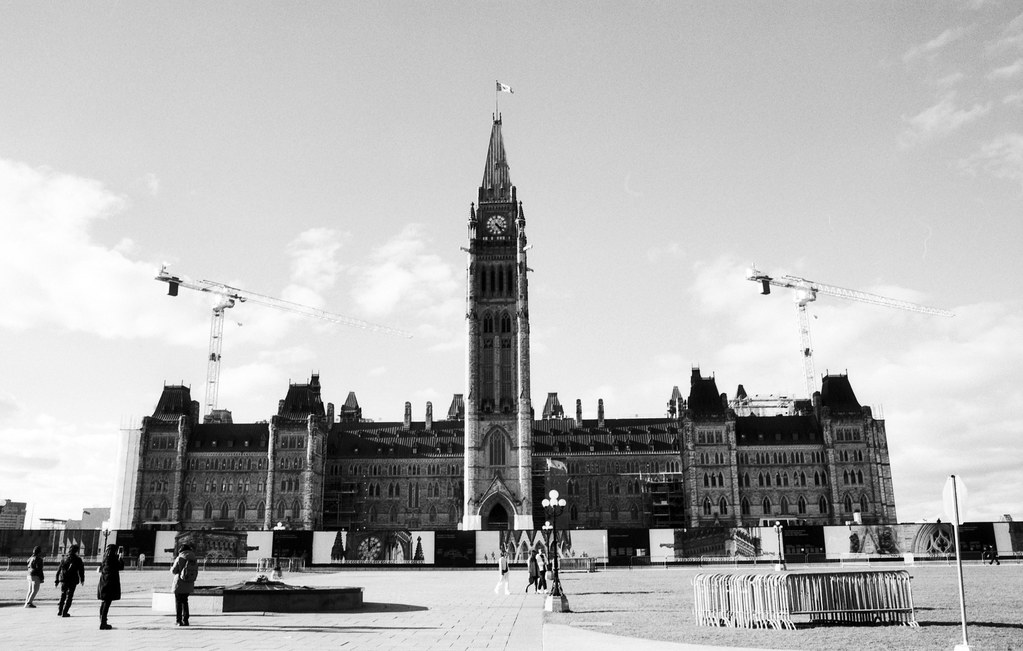
Minolta Maxxum 70 – Minolta Maxxum AF 28mm 1:2.8 (Yellow-12) – Arista EDU.Ultra 100 @ ASA-100 – Zone Imaging 510-Pyro (1+100) 7:00 @ 20C
The valley in which the modern city of Ottawa is located was formed when the Champlain Sea drained some ten thousand years ago. Here two great rivers, the Pasapkedjinawong (the river that passes between the rocks, modern Rideau River) and Kichissippi (The Great River, modern Ottawa River), met. Occupied by several peoples long before the arrival of European Explorers, the rivers provided a highway for the cultures of the Omàmiwininiwak peoples. The land was occupied by the Odawa, which means “Traders” in the Anishinaabe language, because they often traded with the Neshnabé, Ojibwe, and Wendat. The first European explorers arrived in the early 17th century, with Étienne Brûle arriving in 1610 and Samuel de Champlain in 1613. It was Champlain who first drew a map of the region in 1632. The French allied themselves with the peoples who lived there in exchange for their services as guides and trade; the French aided them in wars with the Haudenosaunee, at least until peace was achieved in 1701. The British would gain control of the region in 1763 after the Seven Year’s War. The Crawford Purchase of 1783 ceded the land to the British Colonial Government. Although colonisation efforts were not to begin until later in the 19th century, a small survey explored the idea of building a canal out of the Rideau River. The partition of the Province of Quebec in 1791 into two separate provinces, Upper Canada and Lower Canada, saw many American Loyalists fleeing the newly formed United States of America following their revolution. It was in 1800 that Philemon Wright, his family, four other families, and twenty-five labourers arrived near Chaudière Falls on the Lower Canada side of the River. A small farming community grew and soon turned to logging, and in 1806, the first logging raft floated to Quebec City. It wasn’t until after the Anglo-American War of 1812 that settlement in the area started; it also saw the idea of a military canal between Kingston and the Ottawa River to ensure a safe and secure means of moving troops between Upper and Lower Canada, away from the American forts along the St. Lawrence River and avoid the various rapids and navigation hazards on that route. The military settlement of Richmond Landing was the first European settlement in what is today Ottawa, formed in 1818 and a military road, Richmond Road, began construction to connect with another military settlement, Perth, Ontario (founded two years earlier). In 1826, when the construction of the Rideau Canal project formally began, Lieutenant-Colonel John By, the engineer heading up the project, also received the authorisation to establish a townsite at the Ottawa River terminus of the canal. The town took the name of Bytown, which originally started as a joke in 1828, but the joke and the name stuck. The canal bisected the new settlement; the wealthy lived in the upper town, while the lower town contained the working class. The two halves were joined by a bridge in 1827, named the Sappers Bridge, for the military branch that completed the structure. Sitting high above the entrance to the canal was Barracks Hill, where the army established a small fort. Colonel By envisioned a large masonry fort, similar to Fort Henry in Kingston, but when cost overruns were called into question, all works stopped on fortifying the canal. The opening of the canal in 1832 spurred the development of Bytown. While primarily a timber town, foundries, mills, carriage works, tanneries, churches, stores, markets, taverns and hotels opened. Bytown contained a wealth of diverse peoples: Irish, French-Canadians, British, Scottish, and everyone in between. Bytown earned a reputation of being rough and tumble, and the reputation was well earned. The ten-year Shiner’s War between Irish and French-Canadian timber operators resulted in a lot of racial violence and tensions. This violence also spilt over into the years following the Rebellions of 1837-38 when the Stoney Monday Riot of 1849 threatened to turn the two parts of Bytown against each other. Bytown was formally incorporated as a town in 1850, and John Scott was elected as mayor. Four years later, the first railways arrived in Bytown, which spurred another major population boost and in 1855, the city of Ottawa was created. But this wasn’t like the other cities in the Province of Canada. Ottawa lacked many of the comforts of a modern city: no paved roads, no sewer systems, and no gas system. Yet, when Queen Victoria selected Ottawa as the capital of the Province of Canada in 1857, work began quickly to transform the backwater timber city into a proper capital. Barracks Hill was transformed into Parliament Hill with the construction of new parliament buildings in 1860, and seven years later, with the creation of the Dominion of Canada, Ottawa was agreed to be the new national capital. The new Parliament buildings opened in 1876. However, the Ottawa of the late 19th Century remained juxtaposed with the modern government and the heavy industry that still dominated the city’s economy. And as early as the 1890s, efforts were underway to start building a unified city. Electricity first arrived in 1882 through the construction of hydroelectric stations powered by Chaudière Falls, and a year later, Parliament was lit by electric lights (a year before the American White House). In 1885, electric street lights were installed, and in 1893, a full electric street railway was running. A fire tore through the entire city in 1900, destroying much of the waterfront industry and tearing up several residential neighbourhoods. The turn of the century also brought a turn in Ottawa; a more formal style of Gothic Revival and Beaux-Arts became part of the reconstruction. However, it couldn’t yet shake its industrial past as railways drove right into the centre of the city. In 1912, a new Union Station and the accompanying Château Laurier hotel opened, although with much less fanfare than expected due to the death of GTR boss Charles Hayes aboard the RMS Titanic. Although the destruction of the Parliament’s Center Block in 1916 due to an unattended cigar left only the Parliamentary Library standing in the aftermath. A new Center Block opened in 1922, with Canada’s first national war memorial, the Peace Tower, taking centre stage. The war years brought in a new civil service, and soon, every free spot was home to temporary wooden offices to house the new staff. In the post-war period, a great deal of urban renewal was undertaken under the Gerber Plan in 1940. The plan called to demolish some old industries and preserve others for historical purposes. New roads, trails, and parks were built along abandoned railway right-of-ways. New office blocks were built, and the parks were refreshed. The entire system of roads through the capital was improved to better move traffic. Both the Ottawa River and Rideau Canal were cleaned up, and pollution cleared away. High-tech and Tourism industries were brought into the city to move away from the industrial past; museums were built, and squares were constructed. Arts and Culture were put forward. And while a Federal District like in Washington DC was never realised, the city became a proper capital, with homes for the civil service and departments, hotels were constructed, and old buildings refreshed, restored, and reused. Today, Ottawa is a vibrant city to visit, plus a very Canadian activity, ice skating on the Rideau Canal and shopping at the Byward Market.
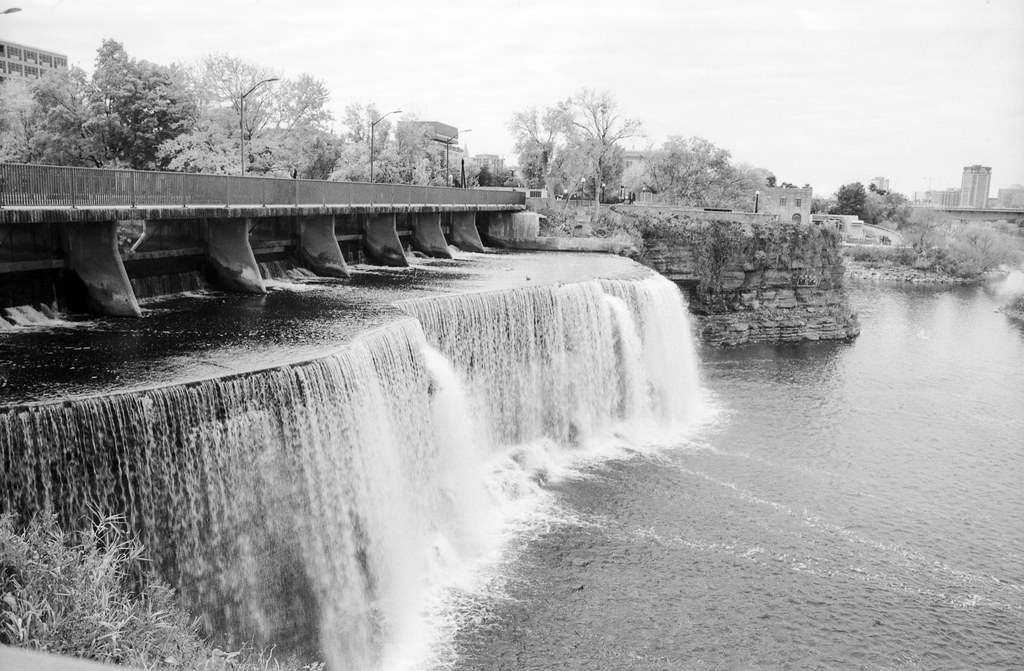
Minolta Maxxum 70 – Minolta Maxxum AF 28mm 1:2.8 (Yellow-12) – Arista EDU.Ultra 100 @ ASA-100 – Zone Imaging 510-Pyro (1+100) 7:00 @ 20C
Minolta Maxxum 70 – Minolta Maxxum AF 28mm 1:2.8 (Yellow-12) – Arista EDU.Ultra 100 @ ASA-100 – Zone Imaging 510-Pyro (1+100) 7:00 @ 20C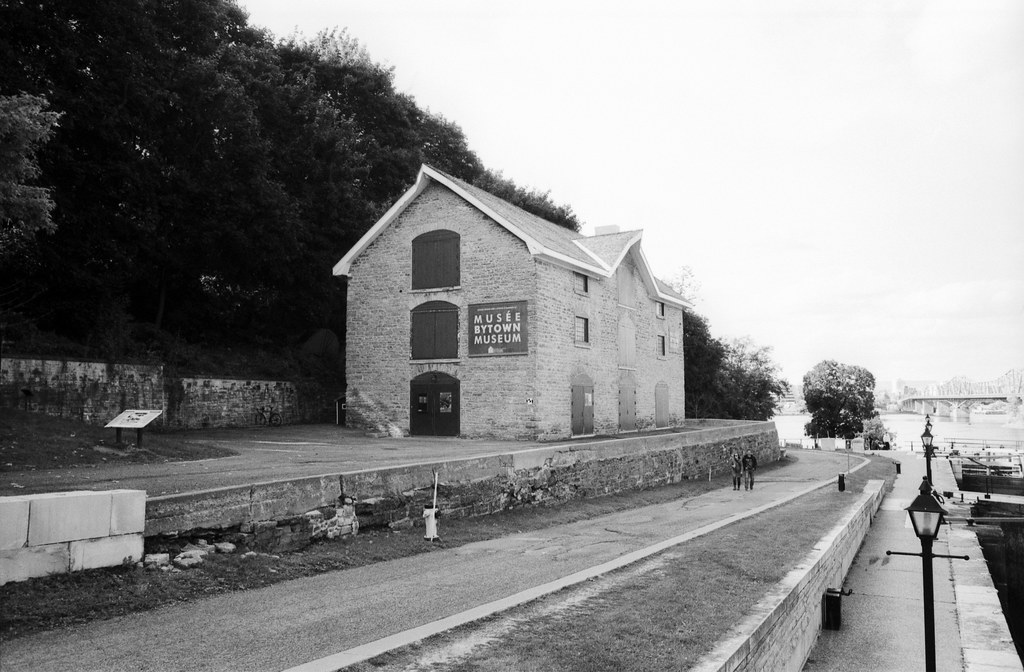
Minolta Maxxum 70 – Minolta Maxxum AF 28mm 1:2.8 (Yellow-12) – Arista EDU.Ultra 100 @ ASA-100 – Zone Imaging 510-Pyro (1+100) 7:00 @ 20C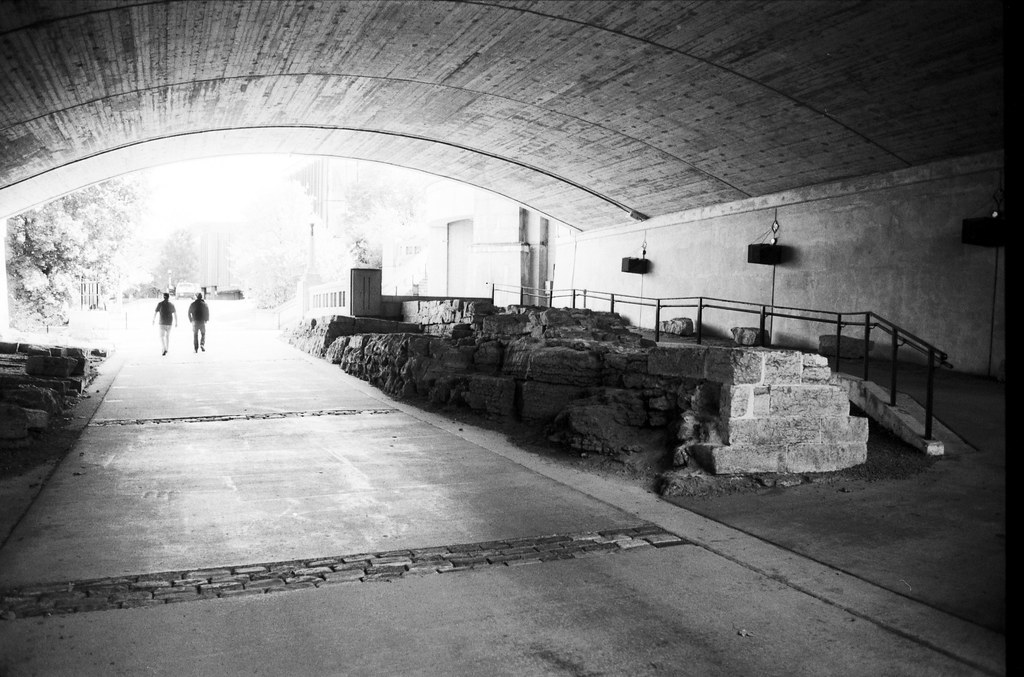
Minolta Maxxum 70 – Minolta Maxxum AF 28mm 1:2.8 (Yellow-12) – Arista EDU.Ultra 100 @ ASA-100 – Zone Imaging 510-Pyro (1+100) 7:00 @ 20C
Different from Washington DC, Ottawa, Ontario, despite being the Canadian Capital, is consistently inconsistent in architectural styles. So, trying to capture a wide range of the city is problematic for two reasons. The first is the relatively wide cross-section of architectural styles, mainly because of the different eras in which some attempts at unifying the city were undertaken. You have a large section that carries the Gothic Revival style, which takes with Parliament Hill and surrounding government buildings. Sprinkled in are some excellent examples of Beaux Arts, Second Empire. The second greatest style is Brutalist, mainly with large government buildings constructed in the post-war era. Thankfully, much of the city’s rich history is located within a small geographical area, so it made it easier to capture over my three full days in the city on a family vacation. I made the point to cover Rideau Hall, the Canal, Byward Market, Parliament Hill, and Sparks Street. While there is a lot more to the city than what I captured, like any big city, it is impossible to cover every aspect in only three days. Overall, I’m happy with the results I got and ended up scanning and posting a majority of the roll. However, it took a lot of work to pick which images to include in this post.
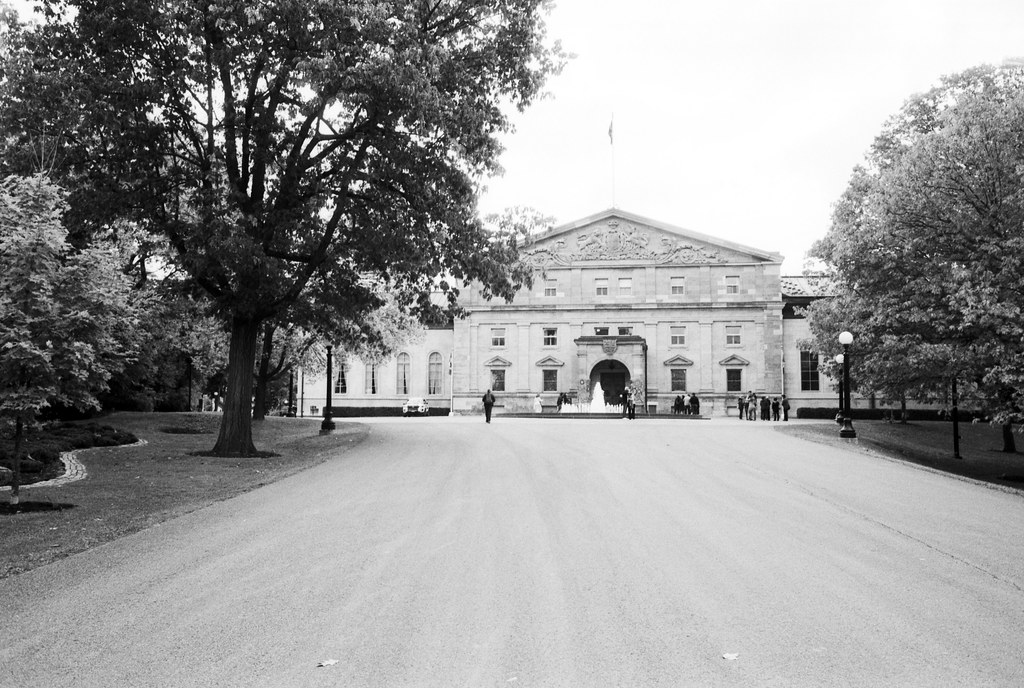
Minolta Maxxum 70 – Minolta Maxxum AF 28mm 1:2.8 (Yellow-12) – Arista EDU.Ultra 100 @ ASA-100 – Zone Imaging 510-Pyro (1+100) 7:00 @ 20C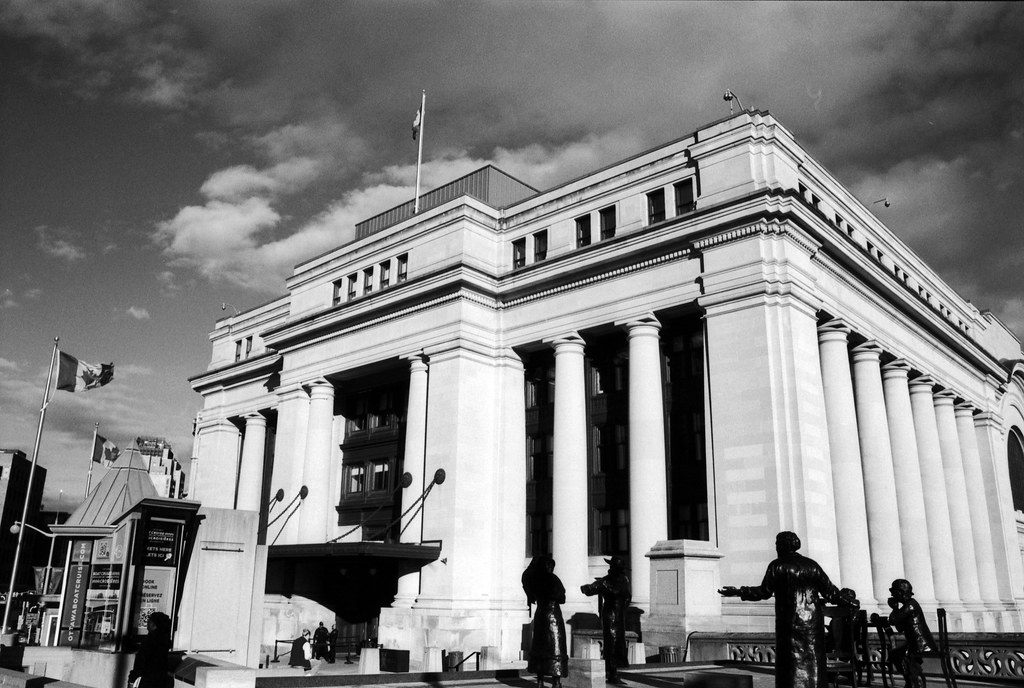
Minolta Maxxum 70 – Minolta Maxxum AF 28mm 1:2.8 (Yellow-12) – Arista EDU.Ultra 100 @ ASA-100 – Zone Imaging 510-Pyro (1+100) 7:00 @ 20C
Minolta Maxxum 70 – Minolta Maxxum AF 28mm 1:2.8 (Yellow-12) – Arista EDU.Ultra 100 @ ASA-100 – Zone Imaging 510-Pyro (1+100) 7:00 @ 20C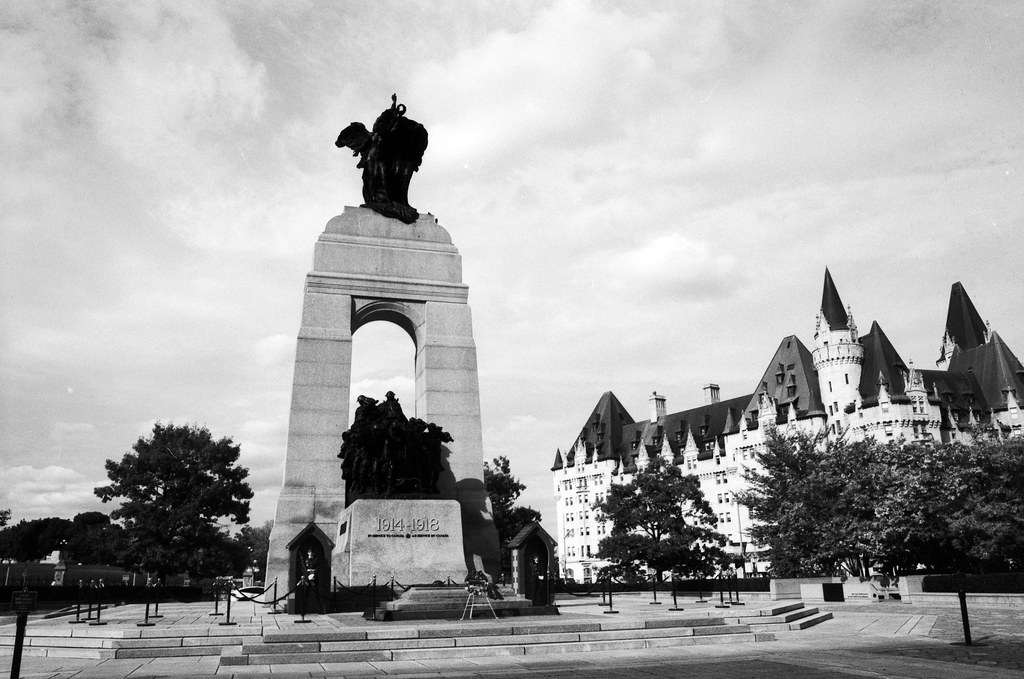
Minolta Maxxum 70 – Minolta Maxxum AF 28mm 1:2.8 (Yellow-12) – Arista EDU.Ultra 100 @ ASA-100 – Zone Imaging 510-Pyro (1+100) 7:00 @ 20C
Being that I was on vacation and already had several other cameras with me (D750, FE2, and m645), I decided to keep things simple and ran the Maxxum 70 with the Maxxum 28mm f/2.8 lens with a yellow filter attached. This combination allowed for the ’70 to take up less space in my camera bag and let me carry it with me no matter where in the city we went. I went with the box speed of ASA-100, and for development, I used Zone Imaging 510-Pyro. Suppose you have yet to hear of 510-Pyro. In that case, it is the most recent addition to the Pyro line of film developers (which are among the oldest developers out there). But unlike previous developers, 510 is in a single concentrate, not two (or three) parts. I love what 510-Pyro does to Arista 100, imparting a nice stain, lovely contrast and excellent sharpness without blowing up the grain too much.

Minolta Maxxum 70 – Minolta Maxxum AF 28mm 1:2.8 (Yellow-12) – Arista EDU.Ultra 100 @ ASA-100 – Zone Imaging 510-Pyro (1+100) 7:00 @ 20C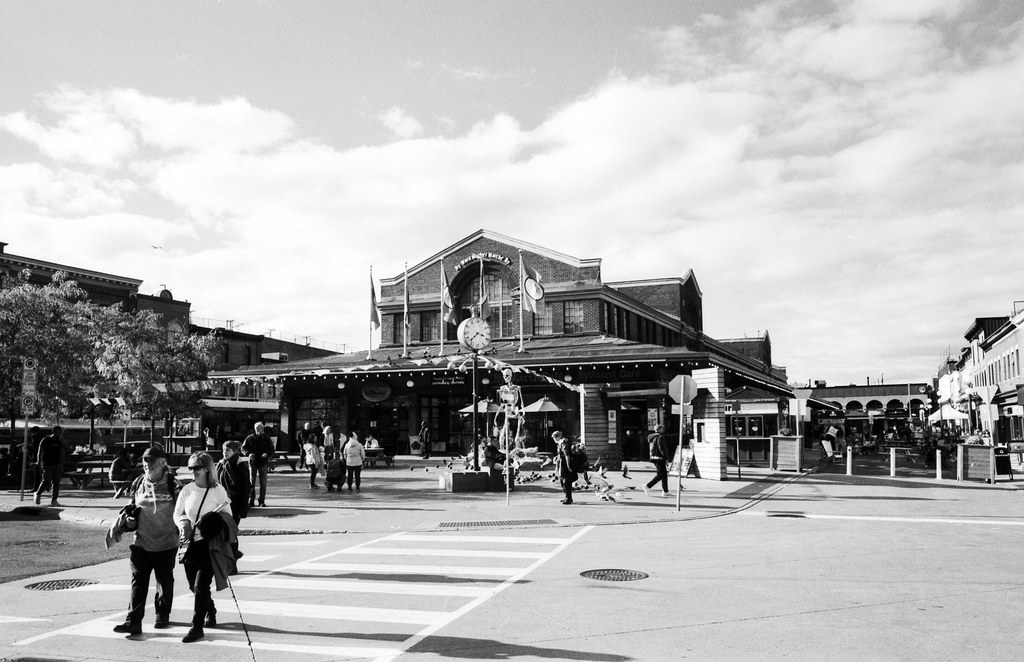
Minolta Maxxum 70 – Minolta Maxxum AF 28mm 1:2.8 (Yellow-12) – Arista EDU.Ultra 100 @ ASA-100 – Zone Imaging 510-Pyro (1+100) 7:00 @ 20C
Minolta Maxxum 70 – Minolta Maxxum AF 28mm 1:2.8 (Yellow-12) – Arista EDU.Ultra 100 @ ASA-100 – Zone Imaging 510-Pyro (1+100) 7:00 @ 20C
Minolta Maxxum 70 – Minolta Maxxum AF 28mm 1:2.8 (Yellow-12) – Arista EDU.Ultra 100 @ ASA-100 – Zone Imaging 510-Pyro (1+100) 7:00 @ 20C
While you can certainly spend a lot of time in Ottawa, these photos only represent a small cross-section of the city. I enjoy Ottawa, both for its history and architecture. It has such a strange mix; all mingled in with history, how a little logging town could transform itself from a rough-and-tumble industrial town to a capital city. Of course, there is still that rough-and-tumble in the city hidden under a thin cover. If you want to see all my photos from the trip, you can find them over on my Flickr page. Next month, we’re heading to Hamilton, Ontario to one of my favourite museums, the Canadian Warplane Heritage Museum.
That’s pretty harsh contrast in those images, Alex! I see a very sharp drop off in shadow information in most of those images. Is the Arista 100 typically that harsh, or is it the 510 that contributed the extra contrast?
Probably a combination of everything from the film, light, filter and dev.
Probably, yes. Good work, demonstrating these materials, thank you